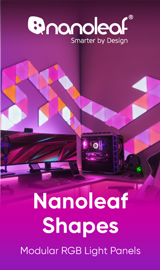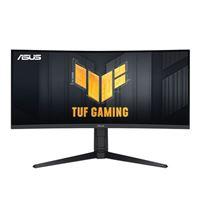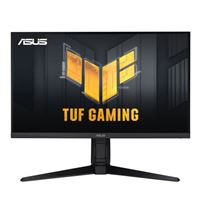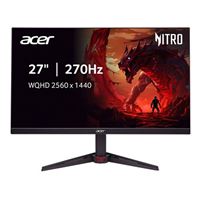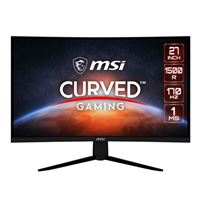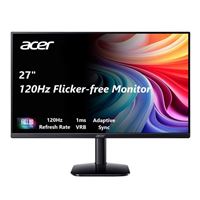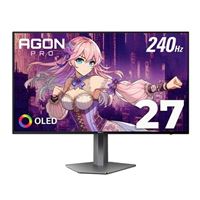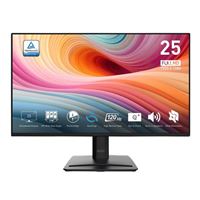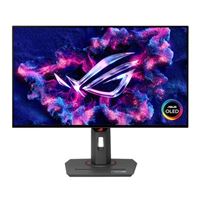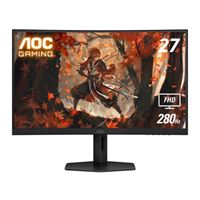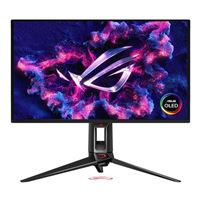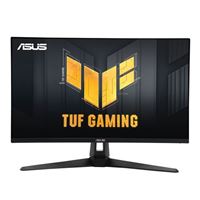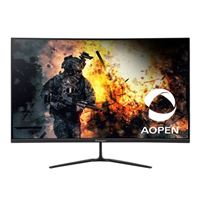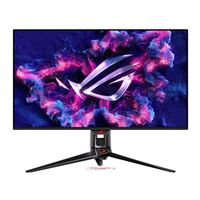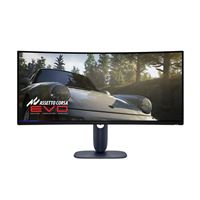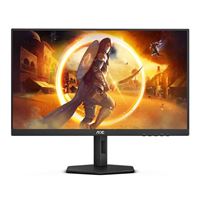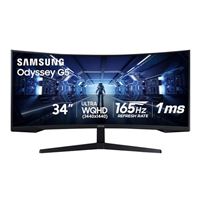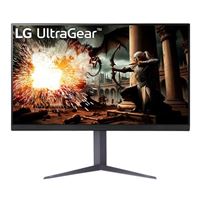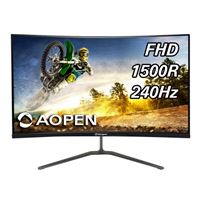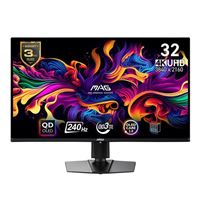Special Offers / Advertisements
Compare up to 4 items
New list of matching products
X
Sorry, you may compare a maximum of 4 items at a time.
Please clear one or more of your compare items before adding another-
SKU: 695163
- AMD FreeSync Compatible
- HDMI DisplayPort
- Acer Display Widgets
- ZeroFrame Design
- AMD FreeSync Compatible
- HDMI DisplayPort
- Acer Display Widgets
14 IN STOCK at Tustin StoreOur price $249.99Original price $269.99Save $20.00 -
SKU: 620476
- AMD FreeSync Premium Pro
- HDR
- HDMI DisplayPort
- Extreme Low Motion Blur
- ASUS Variable Overdrive
- AMD FreeSync Premium Pro
- HDR
- HDMI DisplayPort
22 IN STOCK at Tustin StoreOur price $299.99Original price $329.99Save $30.001 open box from $239.96 -
SKU: 644351
- AMD FreeSync Premium / NVIDIA G-Sync Compatible
- HDR
- HDMI Displayport
- Extreme Low Motion Blur
- GameVisual
- AMD FreeSync Premium / NVIDIA G-Sync Compatible
- HDR
- HDMI Displayport
25+ IN STOCK at Tustin StoreOur price $249.99 -
SKU: 770016
- AMD FreeSync Premium Compatible
- HDMI DisplayPort
- Zero Frame Design
- Acer VisionCare
- AMD FreeSync Premium Compatible
- HDMI DisplayPort
- Zero Frame Design
12 IN STOCK at Tustin StoreOur price $249.99Original price $269.99Save $20.00 -
SKU: 768242
- AMD FreeSync Premium / G-Sync Compatible
- HDR
- HDMI DisplayPort USB Type-C
- Built In KVM
- Aspect Control
- AMD FreeSync Premium / G-Sync Compatible
- HDR
- HDMI DisplayPort USB Type-C
24 IN STOCK at Tustin StoreOur price $759.991 open box from $683.96 -
SKU: 640466
- AMD FreeSync Premium
- HDR
- HDMI DiplayPort
- 3-Side Virtually Borderless Design
- Low Blue Light
- AMD FreeSync Premium
- HDR
- HDMI DiplayPort
17 IN STOCK at Tustin StoreOur price $149.99Original price $219.99Save $70.00 -
SKU: 812511
- Adaptive Sync Compatible
- DisplayPort HDMI
- VisionCare
- ZeroFrame Design
- Adaptive Sync Compatible
- DisplayPort HDMI
- VisionCare
25+ IN STOCK at Tustin StoreOur price $109.99 -
SKU: 729038
- AMD FreeSync Compatible
- Flicker Free
- HDMI DisplayPort
- VESA DisplayHDR
- AMD FreeSync Compatible
- Flicker Free
- HDMI DisplayPort
1 IN STOCK at Tustin StoreOur price $569.99Original price $649.99Save $80.00 -
SKU: 776161
- Adaptive Sync Compatible
- HDR
- HDMI DisplayPort VGA
- EyesErgo
- Edgeless Design
- Adaptive Sync Compatible
- HDR
- HDMI DisplayPort VGA
25 IN STOCK at Tustin StoreOur price $99.99Original price $119.99Save $20.00 -
SKU: 713149
- NVIDIA G-Sync Compatible
- HDR
- HDMI DisplayPort
- ASUS Aura Sync
- Asus Display Widget
- NVIDIA G-Sync Compatible
- HDR
- HDMI DisplayPort
6 IN STOCK at Tustin StoreOur price $699.992 open box from $594.96 -
SKU: 876326
- Adaptive Sync Compatible
- HDR
- DisplayPort HDMI
- Flicker-Free
- Low Input Lag
- Adaptive Sync Compatible
- HDR
- DisplayPort HDMI
1 IN STOCK at Tustin StoreOur price $169.99 -
SKU: 798686
- AMD FreeSync Premium Pro / NVIDIA G-Sync Compatible
- HDR
- DisplayPort HDMI
- Neo Proximity Sensor
- Dolby Vision Support
- AMD FreeSync Premium Pro / NVIDIA G-Sync Compatible
- HDR
- DisplayPort HDMI
0 IN STOCK at Tustin StoreOur price $1,099.99Original price $1,199.99Save $100.006 open box from $989.96 -
SKU: 841619
- NVIDIA G-Sync / AMD FreeSync Premium Compatible
- HDR
- DisplayPort HDMI
- ELMB Sync
- Extreme Low Motion Blur
- NVIDIA G-Sync / AMD FreeSync Premium Compatible
- HDR
- DisplayPort HDMI
21 IN STOCK at Tustin StoreOur price $149.99Original price $229.99Save $80.001 open box from $143.96 -
SKU: 812503
- AMD FreeSync Compatible
- DisplayPort HDMI
- BlueLight Filter
- ZeroFrame Design
- AMD FreeSync Compatible
- DisplayPort HDMI
- BlueLight Filter
9 IN STOCK at Tustin StoreOur price $229.97 -
SKU: 668913
- AMD FreeSync Premium Pro / NVIDA G-Sync Compatible
- HDR
- HDMI DisplayPort USB Type-C
- DisplayWidget Center
- Aura Sync
- AMD FreeSync Premium Pro / NVIDA G-Sync Compatible
- HDR
- HDMI DisplayPort USB Type-C
0 IN STOCK at Tustin StoreOur price $1,199.997 open box from $899.96 -
SKU: 875617
- AMD FreeSync Premium / NVIDIA G-Sync Compatible
- HDR
- DisplayPort HDMI
- AlienFX Lighting
- Narrow Bezel
- AMD FreeSync Premium / NVIDIA G-Sync Compatible
- HDR
- DisplayPort HDMI
4 IN STOCK at Tustin StoreOur price $769.99Original price $799.99Save $30.00 -
SKU: 876334
- Adaptive Sync Compatible
- HDR
- DisplayPort HDMI
- Flicker-Free
- Kensington Security Slot
- Adaptive Sync Compatible
- HDR
- DisplayPort HDMI
14 IN STOCK at Tustin StoreOur price $149.99 -
SKU: 881136
- AMD FreeSync Premium Compatible
- HDR
- DisplayPort HDMI
- Flicker Free
- Black Equalizer
- AMD FreeSync Premium Compatible
- HDR
- DisplayPort HDMI
9 IN STOCK at Tustin StoreOur price $219.99 -
SKU: 742882
- AMD FreeSync Compatible
- Narrow Bezel Design
- HDMI DisplayPort
- AMD FreeSync Compatible
- Narrow Bezel Design
- HDMI DisplayPort
2 IN STOCK at Tustin StoreOur price $129.99Original price $179.99Save $50.001 open box from $103.96 -
SKU: 829515
- NVIDIA G-Sync / AMD FreeSync Compatible
- HDR
- DisplayPort HDMI
- Flicker Safe
- Black Stabilizer
- NVIDIA G-Sync / AMD FreeSync Compatible
- HDR
- DisplayPort HDMI
25+ IN STOCK at Tustin StoreOur price $299.99 -
SKU: 812479
- AMD FreeSync Premium Compatible
- HDR
- DisplayPort HDMI
- VisionCare
- ZeroFrame Design
- AMD FreeSync Premium Compatible
- HDR
- DisplayPort HDMI
3 IN STOCK at Tustin StoreOur price $329.99Original price $399.99Save $70.00 -
SKU: 738427
- Adaptive Sync Compatible
- HDMI VGA
- Zero Frame Design
- Blue Light Filter
- Adaptive Sync Compatible
- HDMI VGA
- Zero Frame Design
25+ IN STOCK at Tustin StoreOur price $109.99Original price $129.99Save $20.00 -
SKU: 704890
- Adaptive Sync
- HDR
- HDMI DisplayPort USB Type-C
- 5-Way Joystick Navigator
- Graphene film with Custom Heatsink
- Adaptive Sync
- HDR
- HDMI DisplayPort USB Type-C
1 IN STOCK at Tustin StoreOur price $929.99Original price $1,099.99Save $170.00 -
SKU: 876318
- Adaptive Sync Compatible
- HDR
- DisplayPort HDMI
- Flicker-Free
- Kensington Security Slot
- Adaptive Sync Compatible
- HDR
- DisplayPort HDMI
9 IN STOCK at Tustin StoreOur price $129.99Original price $139.99Save $10.00
Special Offers / Advertisements
{
'name': 'XZ320QU 31.5" 2K QHD (2560 x 1440) 180Hz Curved Screen Gaming Monitor',
'id': '679698',
'price': '249.99',
'brand': 'Acer',
'category': 'Computer Monitors|575',
'list': 'Search Results',
'position': 1
},{
'name': 'TUF VG34VQL3A 34" 2K QHD (3440 x 1440) 180Hz Curved Screen Gaming Monitor',
'id': '671893',
'price': '299.99',
'brand': 'ASUS',
'category': 'Computer Monitors|575',
'list': 'Search Results',
'position': 2
},{
'name': 'TUF VG27AQL3A 27" 2K WQHD (2560 x 1440) 180Hz Gaming Monitor',
'id': '674352',
'price': '249.99',
'brand': 'ASUS',
'category': 'Computer Monitors|575',
'list': 'Search Results',
'position': 3
},{
'name': 'Nitro VG270U Z1bmiipx 27" 2K WQHD (2560 x 1440) 270Hz Gaming Monitor',
'id': '687308',
'price': '249.99',
'brand': 'Acer',
'category': 'Computer Monitors|575',
'list': 'Search Results',
'position': 4
},{
'name': 'XG27ACDNG ROG Strix 26.5" 2K WQHD (2560 x 1440) 360Hz LED Monitor',
'id': '685348',
'price': '759.99',
'brand': 'ASUS',
'category': 'Computer Monitors|575',
'list': 'Search Results',
'position': 5
},{
'name': 'G273CQ 27" 2K WQHD (2560 x 1440) 170Hz Curved Screen Gaming Monitor',
'id': '674147',
'price': '149.99',
'brand': 'MSI',
'category': 'Computer Monitors|575',
'list': 'Search Results',
'position': 6
},{
'name': 'KC272 G0bi 27" Full HD (1920 x 1080) 120Hz Gaming Monitor',
'id': '690991',
'price': '109.99',
'brand': 'Acer',
'category': 'Computer Monitors|575',
'list': 'Search Results',
'position': 7
},{
'name': 'AG276QZD2 27" 2K QHD (2560 x 1440) 240Hz QD-OLED Gaming Monitor',
'id': '682809',
'price': '569.99',
'brand': 'AOC',
'category': 'Computer Monitors|575',
'list': 'Search Results',
'position': 8
},{
'name': 'Pro MP252 E2 24.5" Full HD (1920 x 1080) 120Hz Gaming Monitor',
'id': '687962',
'price': '99.99',
'brand': 'MSI',
'category': 'Computer Monitors|575',
'list': 'Search Results',
'position': 9
},{
'name': 'XG27AQDMG ROG Strix 26.5" 2K WQHD (2560 x 1440) 240Hz Gaming Monitor',
'id': '681096',
'price': '699.99',
'brand': 'ASUS',
'category': 'Computer Monitors|575',
'list': 'Search Results',
'position': 10
},{
'name': 'CQ27G4X 27" 2K WQHD (2560 x 1440) 180Hz Curved Screen Gaming Monitor',
'id': '696560',
'price': '169.99',
'brand': 'AOC',
'category': 'Computer Monitors|575',
'list': 'Search Results',
'position': 11
},{
'name': 'PG27UCDM 26.5" 4K UHD (3840 x 2160) 240Hz Gaming Monitor',
'id': '689939',
'price': '1,099.99',
'brand': 'ASUS',
'category': 'Computer Monitors|575',
'list': 'Search Results',
'position': 12
},{
'name': 'TUF Gaming VG279QM1A 27" Full HD (1920 x 1080) 280Hz Gaming Monitor',
'id': '693443',
'price': '149.99',
'brand': 'ASUS',
'category': 'Computer Monitors|575',
'list': 'Search Results',
'position': 13
},{
'name': '32HC5QU S3biiphx 31.5" 2K WQHD (2560 x 1440) 180Hz Gaming Monitor',
'id': '691084',
'price': '229.97',
'brand': 'AOpen',
'category': 'Computer Monitors|575',
'list': 'Search Results',
'position': 14
},{
'name': 'ROG Swift PG32UCDM 31.5" 4K UHD (3840 x 2160) 240Hz Gaming Monitor',
'id': '676972',
'price': '1,199.99',
'brand': 'ASUS',
'category': 'Computer Monitors|575',
'list': 'Search Results',
'position': 15
},{
'name': 'ALIENWARE 34 AW3425DW 34.2" 2K WQHD (3440 x 1440) 240Hz Curved Screen UltraWide Gaming Monitor',
'id': '696546',
'price': '769.99',
'brand': 'Dell',
'category': 'Computer Monitors|575',
'list': 'Search Results',
'position': 16
},{
'name': 'Q27G4XNE 27" 2K QHD (2560 x 1440) 180Hz Gaming Monitor',
'id': '696569',
'price': '149.99',
'brand': 'AOC',
'category': 'Computer Monitors|575',
'list': 'Search Results',
'position': 17
},{
'name': 'Odyssey G55T WQHD 34" 2K WQHD (3440 x 1440) 165Hz Curved Screen UltraWide Gaming Monitor (Refurbished)',
'id': '696858',
'price': '219.99',
'brand': 'Samsung',
'category': 'Computer Monitors|575',
'list': 'Search Results',
'position': 18
},{
'name': 'VG279Q3R TUF Gaming 27" Full HD (1920 x 1080) 180Hz Gaming Monitor',
'id': '684485',
'price': '129.99',
'brand': 'ASUS',
'category': 'Computer Monitors|575',
'list': 'Search Results',
'position': 19
},{
'name': 'UltraGear 32GS75QX-B.AUS 32" 2K WQHD (2560 x 1440) 180Hz Gaming Monitor',
'id': '692554',
'price': '299.99',
'brand': 'LG',
'category': 'Computer Monitors|575',
'list': 'Search Results',
'position': 20
},{
'name': 'Nitro XV273K V3bmiiprx 27" 4K UHD (3840 x 2160) 160Hz Gaming Monitor',
'id': '691086',
'price': '329.99',
'brand': 'Acer',
'category': 'Computer Monitors|575',
'list': 'Search Results',
'position': 21
},{
'name': '27CL1 Gbi 27" Full HD (1920 x 1080) 120Hz Gaming Monitor',
'id': '683850',
'price': '109.99',
'brand': 'Acer',
'category': 'Computer Monitors|575',
'list': 'Search Results',
'position': 22
},{
'name': 'MAG 321UPX QD-OLED 31.5" 4K UHD (3840 x 2160) 240Hz Gaming Monitor',
'id': '679204',
'price': '929.99',
'brand': 'MSI',
'category': 'Computer Monitors|575',
'list': 'Search Results',
'position': 23
},{
'name': '27G4 27" Full HD (1920 x 1080) 180Hz Gaming Monitor',
'id': '696568',
'price': '129.99',
'brand': 'AOC',
'category': 'Computer Monitors|575',
'list': 'Search Results',
'position': 24
}
{'id': 'Tower',
'name': 'Nanoleaf Monitor Tower October 2021',
'creative': 'https://60a99bedadae98078522-a9b6cded92292ef3bace063619038eb1.ssl.cf2.rackcdn.com/images_ads_2021Search_October_nanoleaf_shapes_tower.png',
'position': '1' },{'id': 'Tower',
'name': 'Kanto Monitor Tower January 2020',
'creative': 'https://60a99bedadae98078522-a9b6cded92292ef3bace063619038eb1.ssl.cf2.rackcdn.com/images_ads_2021Search_October_KantoDMS2000st.png',
'position': '2' },{'id': 'Tower',
'name': 'Micro Center eNews Banner',
'creative': 'https://60a99bedadae98078522-a9b6cded92292ef3bace063619038eb1.ssl.cf2.rackcdn.com/webp_MCNewsST.webp',
'position': '3' }


